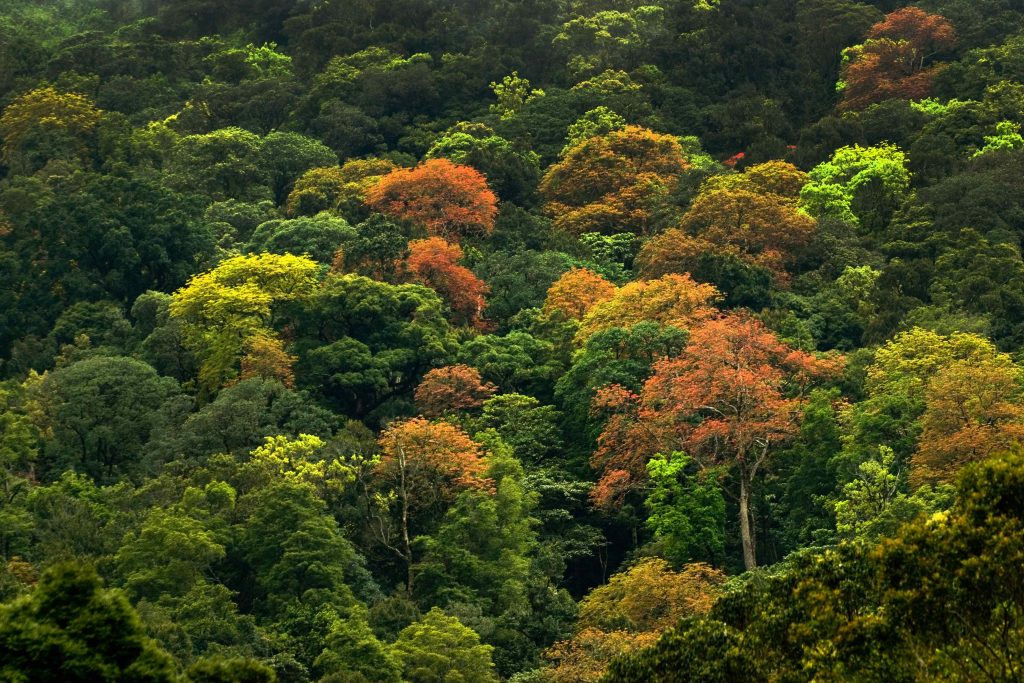
Forests
Principal Investigator:
Dr. Raman Sukumar (Centre for Ecological Sciences, IISc)
Co-Investigators:
Dr. Advait Edgaonkar (Indian Institute of Forest Management)
Dr. Amit Kumar (Central University)
Dr. Ashalata Devi (Tezpur University)
Dr. Ashwani Kumar (Dr. Harisingh Gour University)
Dr. B. S. Adhikari (Wildlife Institute of India)
Dr. G. S. Rawat (Wildlife Institute of India)
Dr. Jayashree Ratnam (National Centre for Biological Sciences)
Prof. Md. Latif Khan (Dr. Harisingh Gour University)
Prof. P. K Khare (Dr. Harisingh Gour University)
Dr. Purabi Saikia (Central University)
Dr. Rajkumar S. Yadav (Gujarat Ecological Education and Research Foundation)
Dr. Sreejith Kalpuzha (Kerala Forest Research Institute)
Long-term forest monitoring studies around the world suggest that climatic fluctuations and fires can cause tree species compositions to change over time. These compositional changes depend not only on the traits of the constituent species (favoring deciduous over evergreen species in response to prolonged drought, for instance) but also on the type of forest. Changes to vegetation can affect ecosystem functioning, alter carbon balance and hydrology, and have a feedback effect on regional and global climate.
The importance of long-term forest studies is highlighted by the 50 ha Mudumalai Forest Dynamics Plot that, in over 30 years of monitoring by the Centre for Ecological Sciences, Indian Institute of Science, has yielded key insights into the role of factors such as fire and drought in regulating the dynamics of tropical dry deciduous forests. However, in the absence of similar efforts elsewhere, it remains unclear whether the patterns observed in Mudumalai hold true for other forest types or even other dry-deciduous forests in the country.
The objective of the LTEO Forests theme is to set up the baselines for understanding the responses of the diverse forest communities across India’s major forest biomes to environmental change. In particular, the study design aims to:(a) characterize how forest structure, species diversity, and biomass change across broad environmental gradients, (b) determine how forest stand structure and dynamics relate to local climate, soil characteristics, and fire regime, (c) quantify long-term changes in species abundances, community composition and forest biomass, and (d) quantify patterns of above-ground and below-ground carbon and nutrient cycling.
